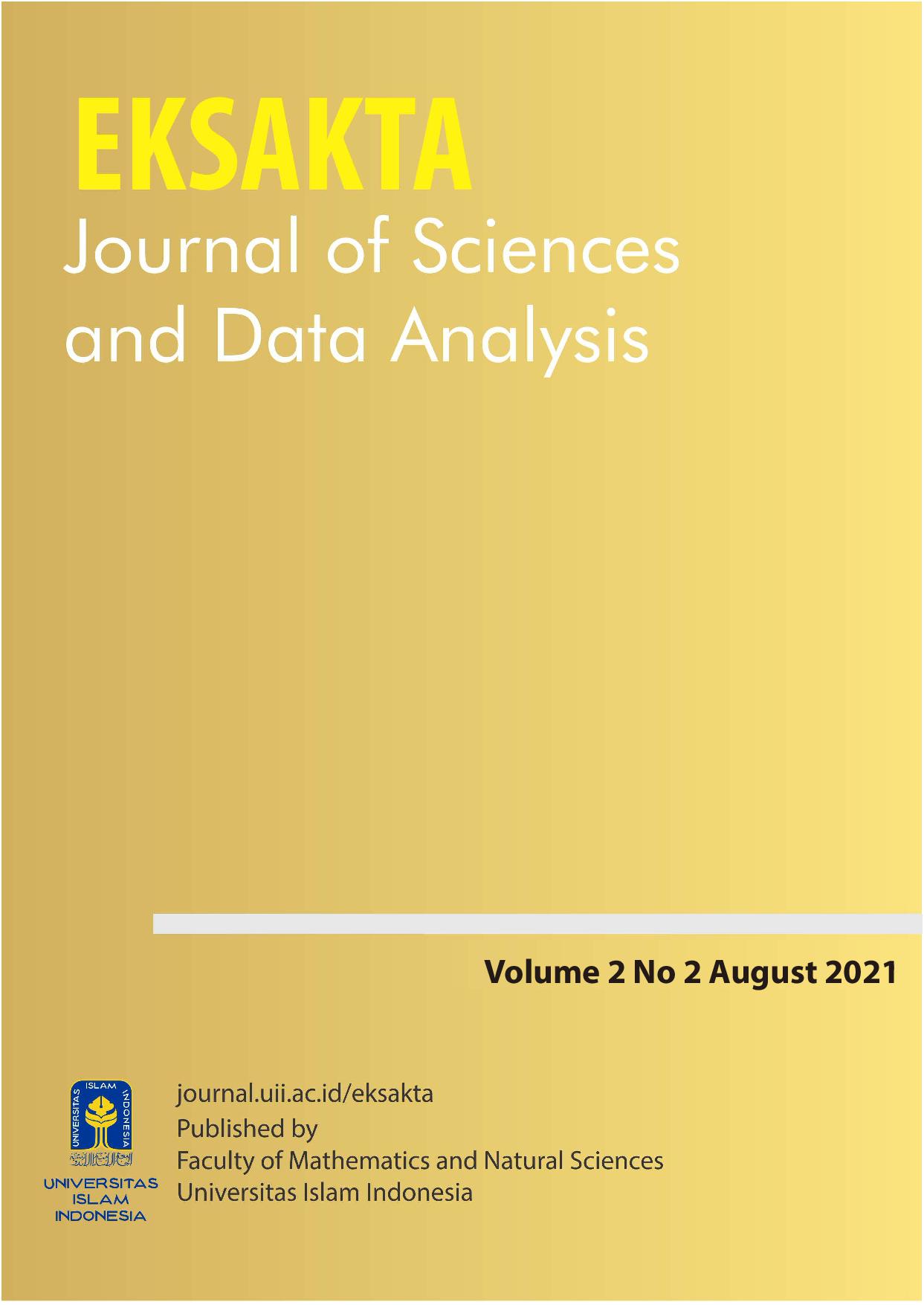Main Article Content
Abstract
Keywords
Article Details
References
- A. Sulistyawati, Pelayanan Keluarga Berencana, Salemba Medika, Jakarta, 2011.
- S. L. Naustion, Faktor-Faktor Yang Mempengaruhi Penggunaan MKJP di Enam Wilayah Indonesia, Pusat Penelitian dan Pengembangan KB, Jakarta, 2011.
- B. K. RI, Riset Kesehatan Dasar (RISKESDAS), Balitbang Kemenkes RI, Jakarta, 2013.
- P. Shetty and S. Singh, Hierarchical Clustering: A Survey, International Journal of Applied Research 7(4) (2021) 178-181.
- NHS, Your Contraception Guide, 17 March 2021. [Online]. Available: https://www.nhs.uk/conditions/contraception/. [Accessed 7 June 2021].
- P. N. Tan, M. Steinbach and V. Kumar, Introduction to Data Mining, Pearson Education, Boston, 2006.
- J. F. Hair, R. E. Anderson, R. L. Tatham and W. C. Black, Multivariate Data Analysis Fifth Edition, Prentice-Hall, Inc., USA, 1998.
- R. A. Johnson and G. K. Bhattacharyya, Statistics Principles & Methods, John Wiley & Sons, USA, 2010.
- J. I. Daoud, Multicollinearity and Regression Analysis, Journal of Physics: Conference Series 949 (2017) 1-6.
- S. Saracli, N. Dogan and I. Dogan, Comparison of Hierarchical Cluster Analysis Methods by Cophenetic Correlation, Journal of Inequalities and Applications 203(1) (2013) 1-8.
- P. Kaur, J. Stoltzfus and V. Yellapu, Descriptive Statistics, International Journal of Academic Medicine 4(1) (2018) 60-63.
- N. W. D. Ayuni and I. G. A. M. K. K. Sari, Analysis of Factors that Influencing the Interest of Bali State Polytechnic’s Students in Entrepreneurship, Journal of Physics: Conference Series, 953 (2018) 1-10.
- I. Gozhali, Aplikasi Analisis Multivariat dengan Program SPSS, Badan Penerbit Universitas Diponegoro, Semarang, 2001.
- P. R. Carvalho, C. S. Munita, A. L. Lapolli, Validity Studies Among Hierarchical Methods of Cluster Analysis Using Cophenetic Correlation Coefficient, International Nuclear Atlantic Conference, (C) (2017)
- Z. Zhang, F. Murtagh, S. P. Poucke, S. Lin and P. Lan, Hierarchical Cluster Analysis in Clinical Research with Heterogeneous Study Population: Highlighting Its Visualization With R, Annals of Translational Medicine 5(4) (2017) 1-11.
References
A. Sulistyawati, Pelayanan Keluarga Berencana, Salemba Medika, Jakarta, 2011.
S. L. Naustion, Faktor-Faktor Yang Mempengaruhi Penggunaan MKJP di Enam Wilayah Indonesia, Pusat Penelitian dan Pengembangan KB, Jakarta, 2011.
B. K. RI, Riset Kesehatan Dasar (RISKESDAS), Balitbang Kemenkes RI, Jakarta, 2013.
P. Shetty and S. Singh, Hierarchical Clustering: A Survey, International Journal of Applied Research 7(4) (2021) 178-181.
NHS, Your Contraception Guide, 17 March 2021. [Online]. Available: https://www.nhs.uk/conditions/contraception/. [Accessed 7 June 2021].
P. N. Tan, M. Steinbach and V. Kumar, Introduction to Data Mining, Pearson Education, Boston, 2006.
J. F. Hair, R. E. Anderson, R. L. Tatham and W. C. Black, Multivariate Data Analysis Fifth Edition, Prentice-Hall, Inc., USA, 1998.
R. A. Johnson and G. K. Bhattacharyya, Statistics Principles & Methods, John Wiley & Sons, USA, 2010.
J. I. Daoud, Multicollinearity and Regression Analysis, Journal of Physics: Conference Series 949 (2017) 1-6.
S. Saracli, N. Dogan and I. Dogan, Comparison of Hierarchical Cluster Analysis Methods by Cophenetic Correlation, Journal of Inequalities and Applications 203(1) (2013) 1-8.
P. Kaur, J. Stoltzfus and V. Yellapu, Descriptive Statistics, International Journal of Academic Medicine 4(1) (2018) 60-63.
N. W. D. Ayuni and I. G. A. M. K. K. Sari, Analysis of Factors that Influencing the Interest of Bali State Polytechnic’s Students in Entrepreneurship, Journal of Physics: Conference Series, 953 (2018) 1-10.
I. Gozhali, Aplikasi Analisis Multivariat dengan Program SPSS, Badan Penerbit Universitas Diponegoro, Semarang, 2001.
P. R. Carvalho, C. S. Munita, A. L. Lapolli, Validity Studies Among Hierarchical Methods of Cluster Analysis Using Cophenetic Correlation Coefficient, International Nuclear Atlantic Conference, (C) (2017)
Z. Zhang, F. Murtagh, S. P. Poucke, S. Lin and P. Lan, Hierarchical Cluster Analysis in Clinical Research with Heterogeneous Study Population: Highlighting Its Visualization With R, Annals of Translational Medicine 5(4) (2017) 1-11.




